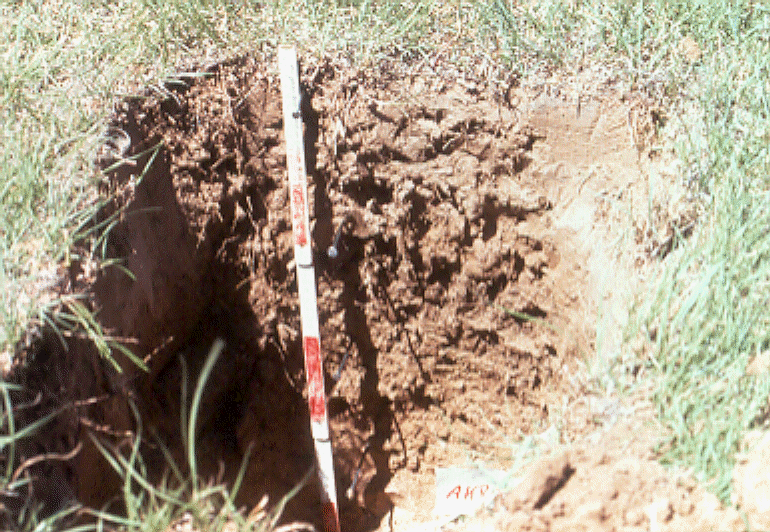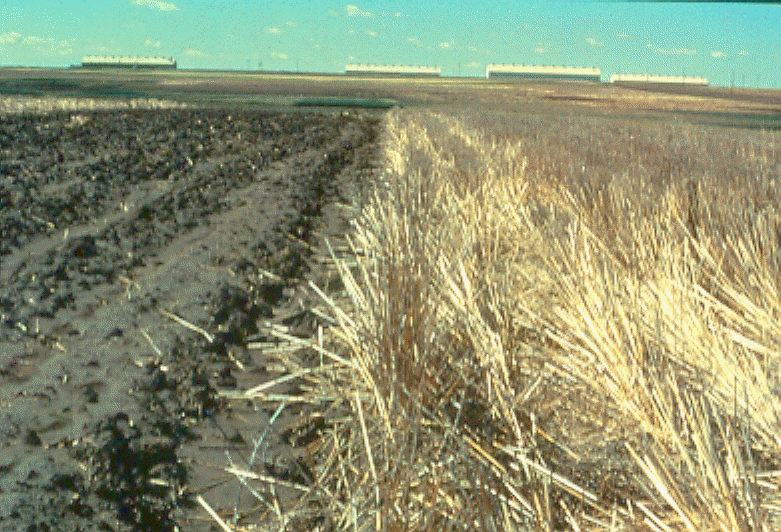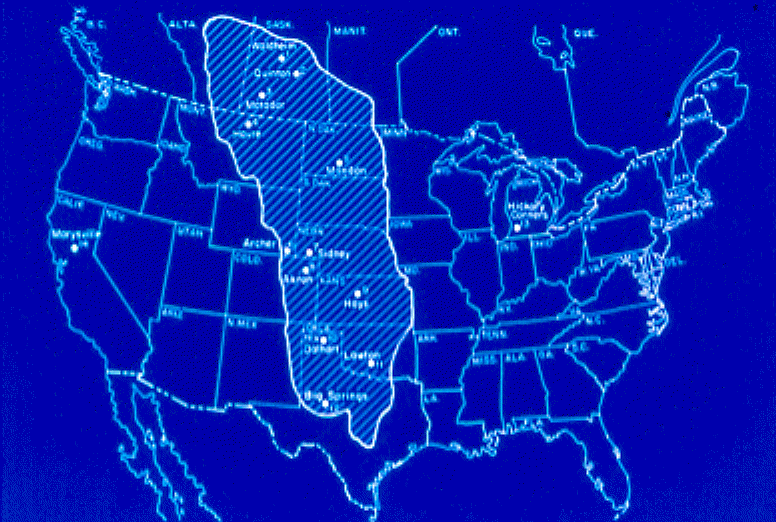|
Soil
Carbon Sequestration and Age in the Historic Grasslands of
the Ronald F. Follett, USDA/AARS
Soil-Plant-Nutrient Research Unit, Fort Collins, CO 80522 rfollett@lamar.colostate.edu Eldor Paul, Natural Resource Ecology Laboratory, Colorado State University, Fort
Collins, CO 80523 eldor@nrel.colostate.edu Steven W. Leavitt, LTRR, The This project was initiated to increase our knowledge of global change
related to the role of soil organic carbon (SOC) in sequestering atmospheric
carbon dioxide (CO2), a greenhouse gas. The research focuses on the use of
radiocarbon dating through accelerator mass-spectrometric measurement of SOC 14C
activity to determine how long the carbon (C) has been sequestered in the
soil. Radiocarbon dates of the SOC
with profile depth from soil samples collected from grassland sites in CO,
TX, MT NE, IA, MO, MN, OK, and ND were determined. These results show the very important role
of soil for long-term sequestration of C as it may related
to its exchange with atmospheric CO2. Grassland sites were sampled by horizon to
a depth of about 2 m. Nearly one-half
of the total weight of SOC is in the top 20 cm and up to one-third can be in
the top 10 cm of the soil. The
remaining one-half is located from 20 to 200 cm below the surface. The mass of SOC was between 85-150 t ha-1
in the top 2 m of soil. These data
show the importance of protecting near-surface soil and its associated SOC
from loss. 14C dating of
soil C indicates that the one-half of the SOC that is sequestered below 20 cm
has mean residence times (MRT) that are greater than 1000 to 2000 years. Soil C at depths of about 2 m has MRT of
9000 to 13000 years, but accounts for only about five percent of the
total. Thus, once sequestered, immense
amounts of SOC have remained in soil profiles for a very long time. Publications: Follett,
R.F., Kimble, J., Leavitt, S.W.
and Preussner, E., 2004. Potential use of soil C
isotope analyses to evaluate paleoclimate. Soil
Science 169: 471-488. Follett,
Ronald F., Leavitt, Steven W., Kimble, John M., and Pruessner, Elizabeth G., 2003. Paleoenvironmental inferences from
d13C of soil organic carbon in 14C-dated profiles in the Follett, R.F., Paul, E.A., Leavitt,
S.W., Halvorson, A.D. and Peterson, G.A., 1997. Determination of soil organic matter pool
sizes and dynamics: 13C/12C ratios of Leavitt, S.W., Follett, R.F.,
Kimble, J.M., and Pruessner, E.G., 2007.
Radiocarbon and d13C depth profiles
of soil organic carbon in the Leavitt, S.W., Paul, E.A., Pendall, E., Pinter, P.J. and Kimball, B.A., 1996. Field variability of carbon isotopes in
soil organic carbon. Nuclear
Instruments and Methods in Physics Research B 123: 451-454. Paul, E.A., Follett, R.F., Leavitt,
S.W., Halvorson, A., Peterson, G. and |
|
Figures: Soil Pit at Akron, CO (upper left); Native and plowed grasslands at Sydney, NB (upper right); Grassland maps (lower) |
|
|



